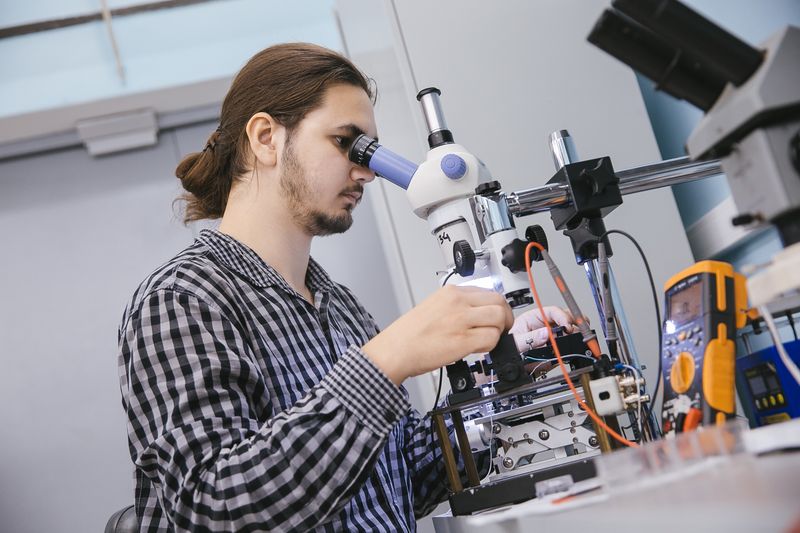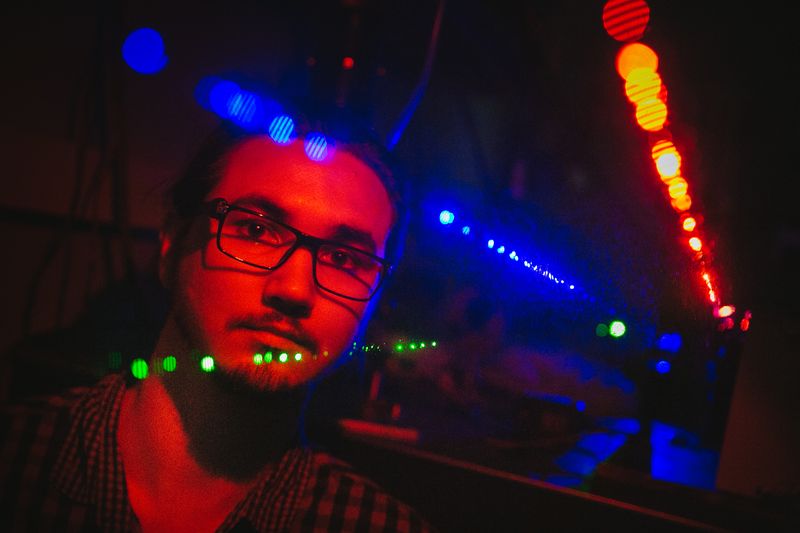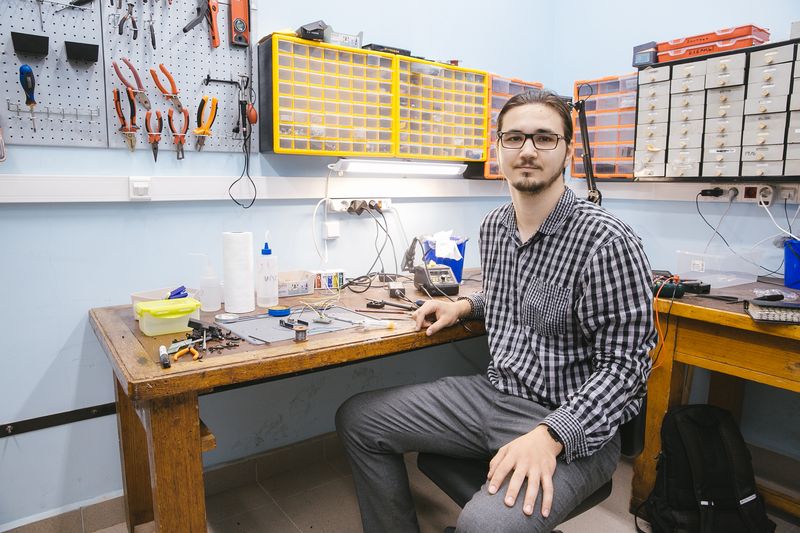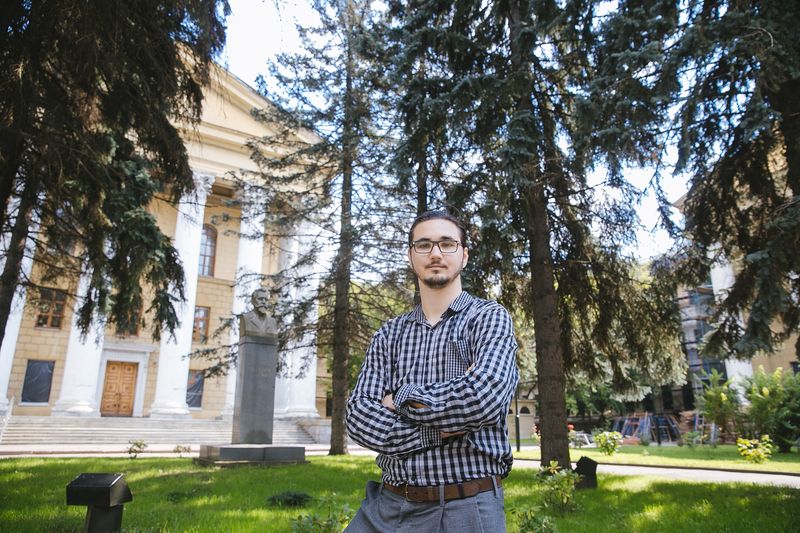'I Aspire to Win the Nobel Prize. It Is a Goal, Not Just a Dream'
In the 9th grade, Arslan Galiullin stopped copying other students' physics homework and became fascinated by science, eventually making it his career. In this interview with the HSE Young Scientists project, he speaks about topological insulators, the potential future transition from electronics to spintronics, and his goal of winning the Nobel Prize.
Why I Decided to Become a Scientist
I owe my journey into science to my parents, who enrolled me in the right schools and clubs, and to the teachers at both school and university. In the 7th grade, I joined the 'Second School' Lyceum, which had an in-depth focus on physics and mathematics. Both then and now, the teachers there have been truly remarkable. However, I had come from a regular school and lacked the motivation to fully engage in my studies. For the first two years, I consistently copied all my homework from my peers, including assignments in physics. But in the 9th grade, when we started a more advanced physics course, I spontaneously switched to studying diligently and completing my homework independently. I made significant progress, and by summer, on the recommendation of my teachers (especially my physics teacher Andrei Kondratyev), I was selected to participate in a summer programme for gifted youth at the Sirius Educational Centre. In acknowledgment of my successful completion of the 9th grade, the same physics teacher presented me with the book A Course of Physics by A.A. Detlaf and B.M. Yavorsky. I was inspired, and during grades 10 and 11, attended additional courses, participated in various extracurricular projects, and eventually became a prize-winner in the All-Russian Olympiad in physics for school students. This achievement entitled me to enrol in a physics degree programme at any university without the need for entrance exams.
Why I Chose HSE University
I enrolled in the HSE Faculty of Physics during its first admission cycle. I was drawn to HSE University as a young institution, and the recently established faculty appeared to offer vast opportunities. It has indeed allowed me to fully realise my potential.
According to the curriculum, all students at the Faculty of Physics had to choose a specialised track in the third year, and from the fourth year onward, would be assigned an academic supervisor. However, during my first year, I already had a fairly clear idea of the area I wanted to specialise in when Alexander Kuntsevich, my teacher at the time, offered to become my academic supervisor.

The Subject of My Research
I study the physical properties of two-dimensional (ie ultra-thin) topological insulators. These materials, experimentally discovered between 2006 and 2007, constitute a new form of matter alongside metals, semiconductors, and insulators. Topological insulators have not yet found practical applications; these are currently being investigated. However, this field holds great promise, which was why the 2016 Nobel Prize in Physics was awarded for the study of topological concepts.
Nearly all the materials investigated in our laboratory have been artificially engineered. A popular approach in contemporary science is to begin by synthesising a material that does not naturally occur and then to study its properties and potential applications. To be more precise, these materials cannot occur naturally in principle, as their structure is specifically engineered. For example, the mercury-tellurium quantum wells that I am currently investigating consist of atomically smooth alternating layers of cadmium, mercury, and tellurium.
These materials have been known—although not referred to as 'topological insulators'—since the 1960s, and commonly used for detecting infrared radiation. At a certain juncture, the quality of the obtained crystals reached a level that made it possible to observe topological insulator properties within them. This was initially discovered in Würzburg, Germany, and almost immediately after that in Novosibirsk, Russia.

Where Topological Insulators Can Be Used
The practical application of these materials is still a long way into the future. There are currently no universal guidelines for working with these materials and not many papers presenting experimental findings, while research is ongoing. It is not yet entirely clear which properties of specific topological insulators will be of interest to the national economy. Each research team approaches the study of these materials in a unique way, including their own methods for preparing samples of these crystals for investigation. A crystal is essentially a piece of stone, and additional steps are required for investigating it, such as attaching electrical contacts when the study focus is on the material's electrical properties. Our team is no exception; my thesis outlines the sample preparation method developed in our laboratory, a method that I use and consider optimal.
One prospective application of these materials may lie in spintronics, an analogue of electronics where information is transmitted not through a stream of electrons, but through a stream of spins. If a processor could be designed to operate based on spintronic principles, without the need for transmitting electric current, it might, in some respects, surpass classical processors. Existing modern processors, for example, have a restricted clock frequency due to the heat generated by the electric current. A spintronic processor, on the other hand, should be free of this limitation.

What My Master's Thesis Is About
My thesis focuses on developing a spin rectifier using quantum wells of mercury telluride. We employ a special sample preparation method, ostensibly enabling the formation of a spin current without the need for an external magnetic field. If we demonstrate the existence of a spin current in our samples without any accompanying electric current, we will have successfully created a spintronics element. It will come with significant limitations, being considerably larger in size compared to classical micro- or nanoelectronics, inherently inefficient, and operable only at low temperatures. Nevertheless, it will be brought into existence. Our objective is to establish a foundation and conduct research that will serve as the groundwork for subsequent developments. We aim, specifically, to publish our findings in scientific journals. Publication will signify that we have attracted the interest of the scientific community and have made a meaningful contribution.
How I Prepare Samples for Research
From Novosibirsk, they send us a thin blank which is several square centimetres in size—a quantum well crystal on a GaAs substrate (an analogue of a silicon substrate), and then I process this material to transform it into a measurable sample. First, I must cut it into small pieces using a device akin to a glass cutter but designed for substrates, ensuring the minimal use of the valuable material since a very small piece is sufficient for our research. Then I employ lithography and etching techniques to render the required shape to the test sample for electrical measurements. Picture the original blank as a sheet of paper on which I draw an outline of the desired shape, using lithography, and then employ etching to cut it out along the outlined contour.
Next, I perform a series of manipulations required for using the sample in our experiment, such as applying a dielectric layer, spraying a metal layer to create a gate (if we want to craft a field-effect transistor-type structure for modulation of electron concentration), and others; attaching contacts to the quantum well, mounting the sample onto the measuring device, and cooling the sample using a cryostat (a high-power freezer). Then I conduct measurements.
I aspire to win the Nobel Prize. It is a goal, not just a dream.
Generally speaking, science is a way of life for me and many others; it is a shared curiosity that unites people worldwide. I feel as though I have been engaged in science throughout my life, making it difficult for me to separate my scientific work from everyday activities. Even when I need, for example, to repair a broken kitchen mixer (which doesn't happen often), there's still an element of science involved. I must study how the appliance is designed, understand its workings, reflect on the problem, and do what needs to be done. This is essentially the same process as making scientific discoveries in the laboratory: sitting down, analysing, approaching the task with a scientific mindset, drawing upon all available knowledge. The only distinction is that instead of a mixer, there is a laboratory sample, and the desired outcome is not a functioning household appliance but something unprecedented, something not discovered by anyone before you.
Had I not pursued a career in science, I would likely have become a programmer. It is a well-paid profession, with a potential for intellectually stimulating problem-solving. I have a basic proficiency in programming; at home, I can set up an advanced Smart Home system, and in the laboratory, I can program a microcontroller for specific actions or write code for processing experimental data. However, I believe I could achieve more significant results if I were to truly make programming a major focus.
Scientists I Would Like to Meet
It would be engaging to meet a scientist from the 17th or 18th century and share with them the advancements in modern science. But to learn from someone, you need to spend some time working alongside this person. Regarding the question of who I would like to work with and learn from, I would say anyone significantly more productive than I am. I would like to observe their methods and understand how they operate, learning from their experience. That's what internships are for. I would love to spend some time at a place where winters are not as cold as here, such as Singapore; people say it is warm there, and there are well-equipped laboratories.

A Typical Day
I create my own plan for each day, as I don't need to follow a fixed schedule. Since I woke up today, I have spent some time designing electronic circuit boards for work on my computer. Currently, I am giving you this interview. Afterward, I plan to visit a store to purchase plastic for a 3D printer, which I will use to print the case for an electronic device needed for my experiment. Following that, I will head to the institute to continue my work there. I tend to wrap up my daily work quite late, as I can start at a relatively late hour the following morning. While I managed to wake up at 8 am today, I typically begin my day around 10 or 11 am.
How I Deal with Burnout
Since my schedule is flexible, it is usually possible to take a day off work. Another factor that can prevent burnout is the wide variety of tasks to perform. For instance, it can happen that after working on a sample for a week, you accidentally break it. You might not have the morale to start all over again immediately. While you may feel uncomfortable postponing the measurement process, this task can still wait a week while you shift your focus to something else before resuming it later.

My Interests Beyond Science
They are numerous. I enjoy working with my hands. Last summer, I renovated our apartment together with my dad, who is a builder. It was a satisfying experience to learn how to mix plaster and putty and select the appropriate paint for different rooms.
I also enjoy spending time with friends. I play computer games occasionally. I own a 3D printer that I use for rapid prototyping of various household and laboratory items. Exploring technology has been a passion of mine since I was at school. I used to spend entire literature lessons tweaking things on my tablet while pretending to read the electronic version of the required book.
I grow flowers on my balcony. I enjoy cooking. I own a guitar, but lack the patience to practice playing it. I engage in various other projects, such as when my friends invite me to collaborate on creating something interesting together, like designing an electronic device. Overall, I enjoy regularly engaging in new activities, delving deep, and gaining expertise in various fields—it could be almost any field.
What I Have Been Reading and Watching
Sometimes, I watch TV shows in the evenings, and currently I am watching the final episodes of House MD. I am finishing reading an H.P. Lovecraft collection. Prior to that, I read books on personal development and self-discipline, particularly advice on how to reduce mindless scrolling on my phone. I started reading a book about finance, but dropped it because the writing style was very dull.
Advice for Aspiring Scientists
This applies to life in general, not just to science: be driven and assertive, and do not be afraid to ask questions. Being proactive is likely the most crucial aspect. Good academic supervisors help you define your objective, but then you take charge and do everything yourself. They can provide guidance if you ask, but they won't be sitting next to you throughout the entire process.
My Favourite Place in Moscow
HSE University's building on Pokrovka. I own an electric scooter, and it takes me approximately twenty minutes to get there from my house using the bike lane. I like the nice atmosphere near the Tretyakovskaya and Novokuznetskaya metro stations. And I love the Gagarinsky district where I live, which is not far from the Lebedev Institute of Physics. There is a lot of greenery, and the air is quite pleasant.